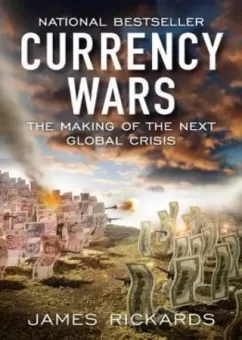CHAPTER 9
The Misuse of Economics
“Human decisions affecting the future . . . cannot depend on strict mathematical expectation, since the basis for making such calculations does not exist; . . . it is our innate urge to activity which makes the wheels go round, our rational selves choosing . . . but often falling back for our motive on whim or sentiment or chance.”
John Maynard Keynes, 1935
In the late 1940s, economics divorced itself from its former allies in political science, philosophy and law and sought a new alliance with the hard sciences of applied mathematics and physics. It is ironic that economics aligned with the classic physics of causality at exactly the time physicists themselves were embracing uncertainty and complexity. The creation of the Nobel Memorial Prize in Economic Sciences in 1969, seventy-four years after the original Nobel Prize in physics, confirmed this academic metamorphosis. Economists were the new high priests of a large part of human activity—wealth creation, jobs, savings and investment—and came well equipped with the equations, models and computers needed to perform their priestly functions.
There has never been a time since the rise of laissez-faire capitalism when economic systems were entirely free of turmoil. Bubbles, panics, crashes and depressions have come and gone with the regularity of floods and hurricanes. This is not surprising, because the underlying dynamics of economics, rooted in human nature, are always at work. Yet the new scientific economics promised better. Economists promised that through fine tuning fiscal and monetary policy, rebalancing terms of trade and spreading risk through derivatives, market fluctuations would be smoothed and the arc of growth extended beyond what had been possible in the past. Economists also promised that by casting off the gold standard they could provide money as needed to sustain growth, and that derivatives would put risk in the hands of those best able to bear it.
However, the Panic of 2008 revealed that the economic emperors wore no clothes. Only massive government interventions involving bank capital, interbank lending, money market guarantees, mortgage guarantees, deposit insurance and many other expedients prevented the wholesale collapse of capital markets and the economy. With few exceptions, the leading macroeconomists, policy makers and risk managers failed to foresee the collapse and were powerless to stop it except with the blunt object of unlimited free money.
To explain why, it is illuminating to take 1947, the year of publication of Paul Samuelson’s Foundations of Economic Analysis, as an arbitrary dividing line between the age of economics as social science and the new age of economics as natural science. That dividing line reveals similarities in market behavior before and after. The collapse of Long-Term Capital Management in 1998 bears comparison to the collapse of the Knickerbocker Trust and the Panic of 1907 in its contagion dynamics and private resolution by bank counterparts with the most to lose. The stock market crash of October 19, 1987, when the Dow Jones Industrial Average dropped 22.61 percent in a single day, is reminiscent of the two-day drop of 23.05 percent on October 28–29, 1929. Unemployment in 2011 is comparable to the levels of the Great Depression, when consistent methodologies for the treatment of discouraged workers are used for both periods. In short, there is nothing about the post- 1947 period of so-called hard economic science to suggest that it has had any success in mitigating the classic problems of boom and bust. In fact, there is much evidence to suggest that the modern practice of economics has left society worse off when one considers government deficit spending, the debt overhang, rising income inequality and the armies of long-term unemployed.
Recent failures have stripped economists of their immunity from rigorous scrutiny by average citizens. What works and what does not in economics is no longer just a matter of academic debate when forty-four million Americans are on food stamps. Claims by economic theorists about multipliers, rationality, efficiency, correlation and normally distributed risk are not mere abstractions. Such claims have become threats to the well-being of the nation. Signal failures of economics have arisen in Federal Reserve policy, Keynesianism, monetarism and financial economics. Understanding these failures will allow us to comprehend why growth has stalled and currency wars loom.
Pages: 1 2 3 4 5 6 7 8 9 10 11 12 13 14 15 16 17 18 19 20 21 22 23 24 25 26 27 28 29 30 31 32 33 34 35 36 37 38 39 40 41 42 43 44 45 46




